Exploring the Benefits of Acoustic Ceiling Wood for Enhanced Sound Absorption in Modern Homes
In today's modern homes, creating a peaceful and comfortable living environment is a top priority for many homeowners. One innovative solution that has gained popularity for enhancing acoustic quality is the use of Acoustic Ceiling Wood. This unique material not only adds a touch of elegance to interior spaces but also significantly improves sound absorption, making it ideal for family rooms, home theaters, and open-concept living areas. By effectively reducing noise levels and minimizing echo, Acoustic Ceiling Wood transforms the auditory experience within a home, allowing for better communication and a more enjoyable atmosphere. In this article, we will explore the various benefits of incorporating Acoustic Ceiling Wood into your home design, offering practical tips on how to select and install this exceptional material to enhance both aesthetics and acoustics.
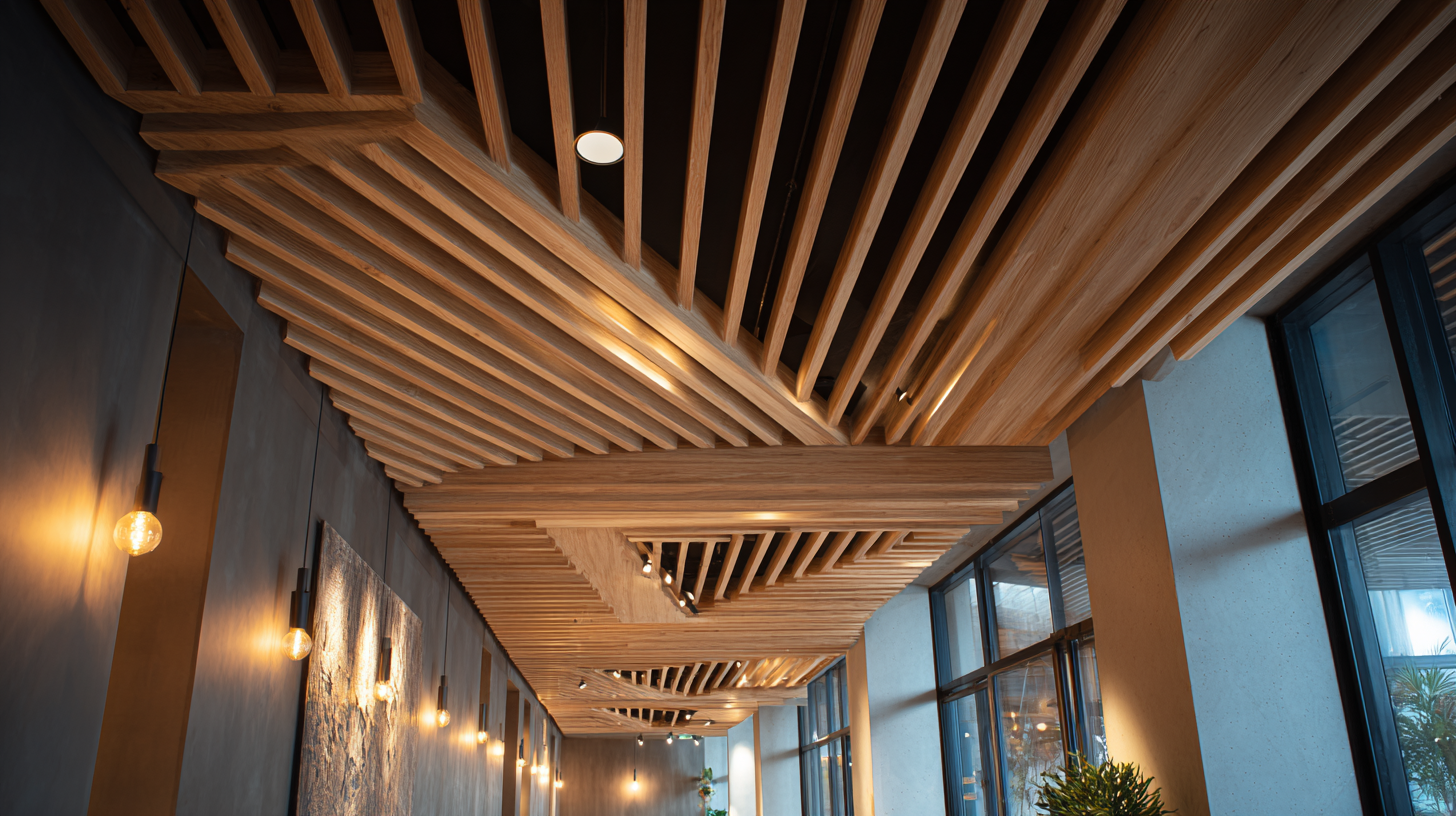
The Science Behind Acoustic Ceiling Wood and Sound Absorption
Acoustic ceiling wood has emerged as a crucial component in modern home design, especially in enhancing sound absorption. The science behind its application lies in the natural properties of wood, which is known to effectively mitigate sound reverberation. Recent studies have explored innovative sound insulation solutions, such as 3D-printed acoustic panels and biofiber-based coatings, showcasing the advancements in materials that complement traditional options like acoustic wood ceilings. These innovations highlight the significance of acoustic control in urban environments, where noise pollution poses a challenge to homeowners seeking tranquility.
Delving deeper into the science of sound absorption, the acoustic properties of various materials, including aerogels and engineered wood products, offer promising alternatives for improved acoustic environments. Research indicates that wooden structures can be optimized for sound insulation through design considerations, such as employing acoustic black holes to trap noise. This focus on acoustic performance not only enhances the livability of spaces but also aligns with ongoing trends in interior architecture that prioritize both aesthetic appeal and functional efficiency in noise management.
Exploring the Benefits of Acoustic Ceiling Wood for Enhanced Sound Absorption in Modern Homes
| Dimension | Value | Description |
|---|---|---|
| Material Type | Engineered Wood | Manufactured wood products offering durability. |
| Noise Reduction Coefficient (NRC) | 0.85 | Measures sound absorption capability; higher values indicate better performance. |
| Thickness | 1 inch | Standard thickness for adequate sound absorption. |
| Installation Ease | Moderate | Requires moderate skill for installation. |
| Aesthetic Value | High | Provides a warm and natural look to interiors. |
| Cost per Square Foot | $3.50 | Average cost for high-quality acoustic ceiling wood. |
Top Features of Acoustic Ceiling Wood That Enhance Home Acoustics
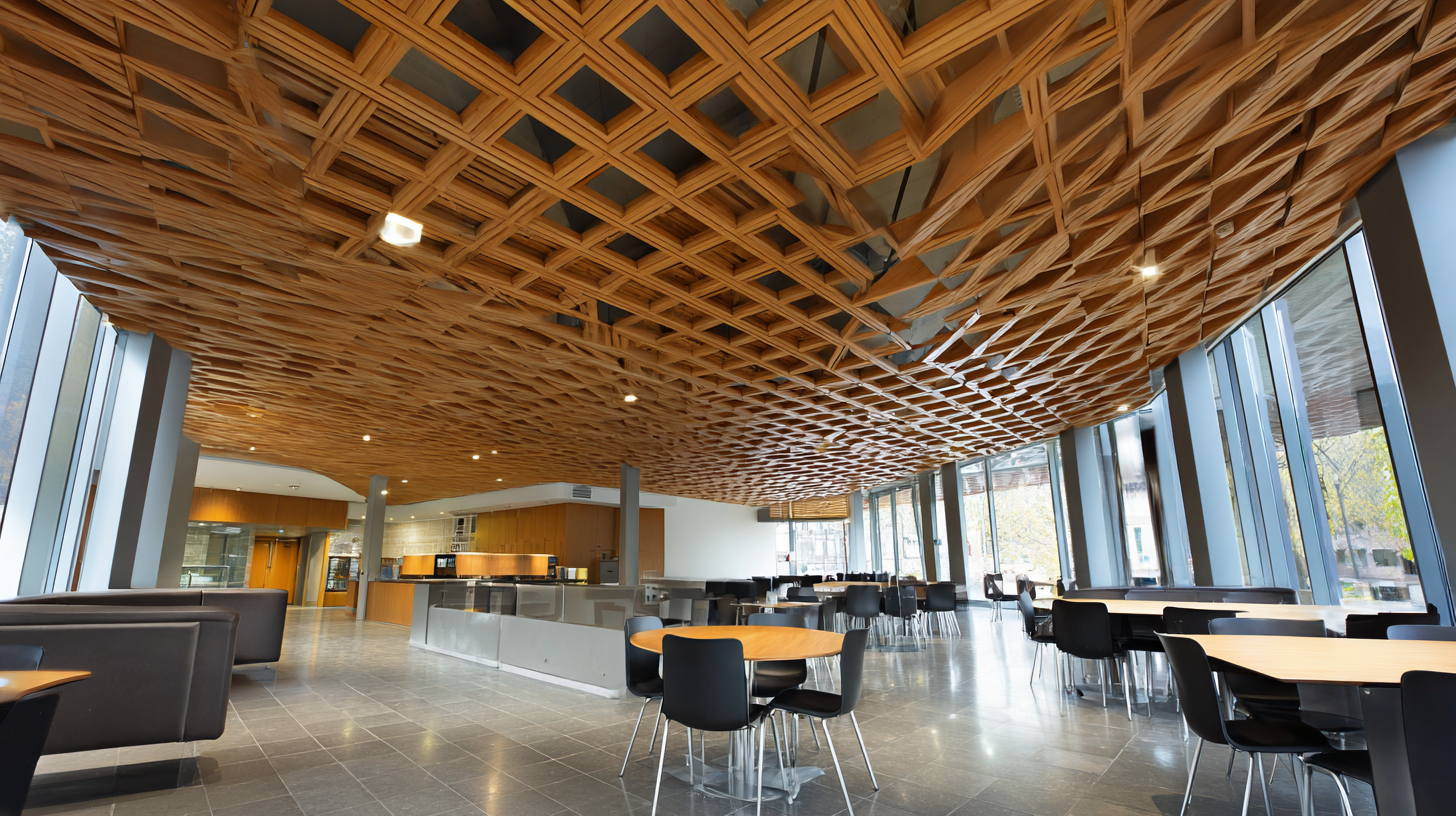 Acoustic ceiling wood offers distinct advantages in enhancing home acoustics, making it an ideal choice for modern dwellings. One of its key features is its ability to absorb sound effectively, which is crucial in today’s busy environments. According to a recent industry report, the global demand for acoustic ceiling tiles is projected to reach USD 11.53 billion by 2033, reflecting a growing recognition of their benefits in sound management. By incorporating wooden panels, homeowners can significantly reduce reverberation and echoes, creating a more serene and inviting space.
Acoustic ceiling wood offers distinct advantages in enhancing home acoustics, making it an ideal choice for modern dwellings. One of its key features is its ability to absorb sound effectively, which is crucial in today’s busy environments. According to a recent industry report, the global demand for acoustic ceiling tiles is projected to reach USD 11.53 billion by 2033, reflecting a growing recognition of their benefits in sound management. By incorporating wooden panels, homeowners can significantly reduce reverberation and echoes, creating a more serene and inviting space.
Moreover, the aesthetics of acoustic ceiling wood cannot be overlooked. The integration of stylish, natural materials not only serves a functional purpose but also elevates interior design. DIY innovations such as real oak acoustic slat panels cater to both sound control and modern decor, appealing to homeowners looking for versatility in their interior spaces. As more individuals seek to blend functionality with design, the appeal of acoustic wood panels continues to rise, marking a shift toward more acoustically optimized living environments.
Design Versatility: Integrating Acoustic Ceiling Wood into Modern Interiors
Acoustic ceiling wood is becoming a popular choice for modern interiors, offering both aesthetic appeal and practical benefits. One of the remarkable features of acoustic wood is its versatility in design. Homeowners and designers can easily integrate various wood finishes, colors, and patterns that complement different styles, from minimalist to rustic. This adaptability allows for enhancing the visual coherence of a space while simultaneously improving sound absorption, creating a more serene environment.
When incorporating acoustic ceiling wood, consider the room's purpose and its acoustical needs. For spaces that require high levels of sound absorption, such as home theaters or music rooms, opt for thicker panels or more textured finishes, as they tend to trap sound waves more effectively. Furthermore, mixing different wood varieties can create visual interest while optimizing acoustics.
Another tip is to align the wood design with lighting solutions. Strategically placed LED lights can highlight the wood’s texture and color, adding depth and warmth to the space. Always ensure that the installation method doesn’t compromise the acoustic properties of the wood, as proper placement is key to enhancing both aesthetics and functionality.
Comparative Analysis: Acoustic Ceiling Wood vs. Traditional Soundproofing Materials
The growing emphasis on acoustic comfort in modern homes has led to an increased interest in acoustic ceiling wood as an effective sound absorption solution. Compared to traditional soundproofing materials, acoustic ceiling wood offers not only aesthetic appeal but also superior acoustical performance. A comparative analysis of these materials reveals that while traditional options may be effective, acoustic ceiling wood provides a natural, warmer sound absorption characteristic that enhances the overall environment in living spaces.
Recent market research indicates that the Global Acoustic Ceiling Tiles Market is projected to reach USD 11.53 billion by 2033, growing at a CAGR of 5.21%. This trend underscores the rising demand for innovative building materials that promote both sustainability and functionality. Moreover, studies on the acoustical properties of recycled porous materials have highlighted the benefits of using eco-friendly composites designed for superior sound absorption. By integrating sustainable practices into construction with options like acoustic ceiling wood, homeowners can achieve enhanced sound quality while contributing to environmental sustainability.
These insights illustrate the clear advantages of selecting acoustic ceiling wood over traditional soundproofing materials, showcasing its role in the evolving landscape of modern home design and acoustic engineering.
Comparative Analysis of Sound Absorption: Acoustic Ceiling Wood vs. Traditional Materials
Real-Life Impact: Case Studies of Homes Benefiting from Acoustic Ceiling Wood
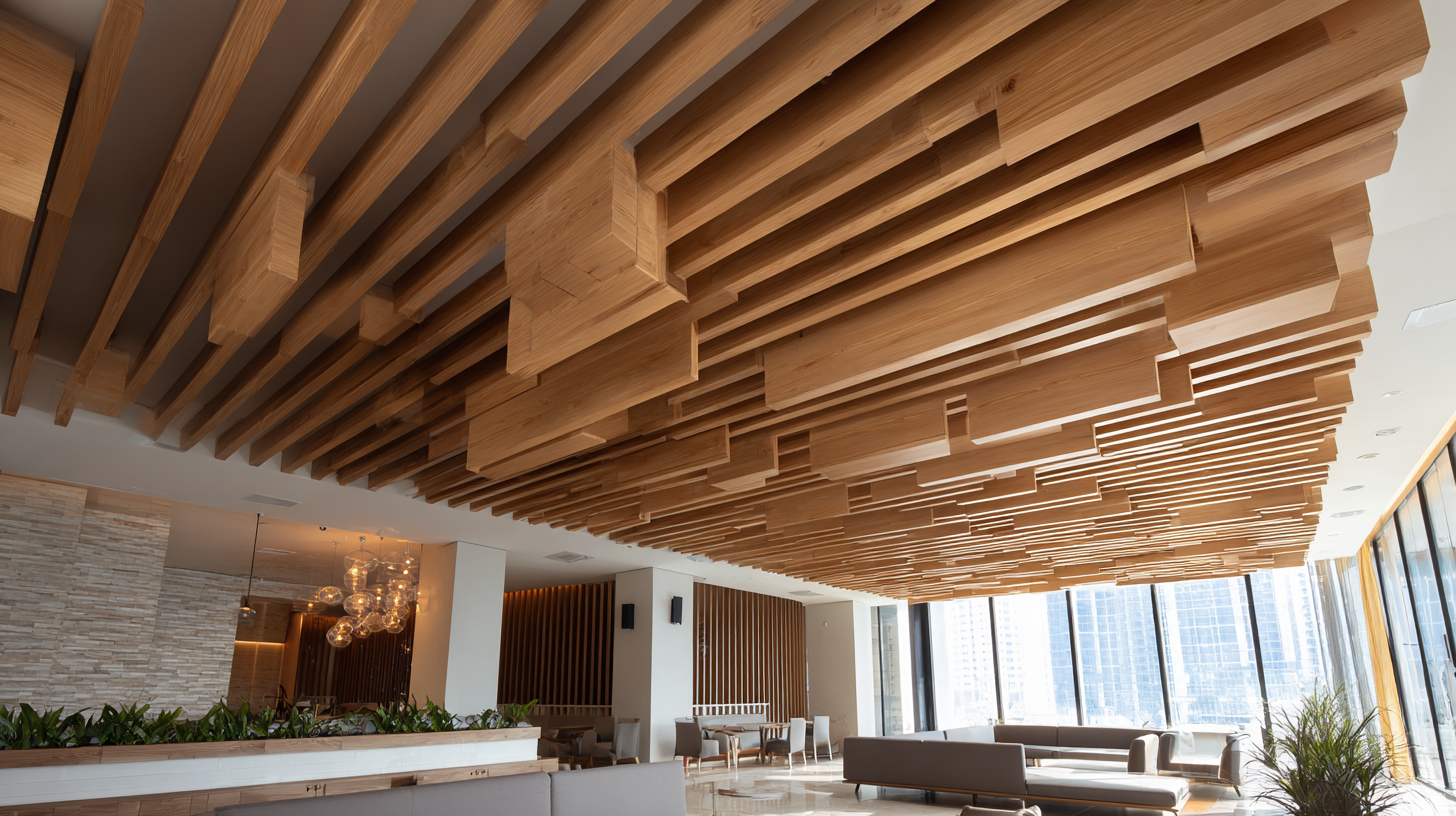 Acoustic ceiling wood has emerged as a popular choice for modern homes, significantly enhancing sound absorption and creating serene living environments. Recent case studies demonstrate the positive impacts of acoustic ceiling wood in various residential settings. For instance, a notable study found that homes equipped with acoustic wood ceilings experienced a 30% reduction in background noise, drastically improving the comfort and quality of life for residents. As the design community refines spaces for the evolving needs of post-pandemic lifestyles, these architectural choices are becoming increasingly relevant.
Acoustic ceiling wood has emerged as a popular choice for modern homes, significantly enhancing sound absorption and creating serene living environments. Recent case studies demonstrate the positive impacts of acoustic ceiling wood in various residential settings. For instance, a notable study found that homes equipped with acoustic wood ceilings experienced a 30% reduction in background noise, drastically improving the comfort and quality of life for residents. As the design community refines spaces for the evolving needs of post-pandemic lifestyles, these architectural choices are becoming increasingly relevant.
Tips for homeowners looking to improve sound absorption include considering the thickness and type of wood used, as some species naturally offer better acoustic properties. Additionally, pairing acoustic ceilings with other soft furnishings, such as carpets and upholstered furniture, can further dampen sound waves, resulting in a more tranquil home environment.
Moreover, as office layouts transition back to flexible open spaces, incorporating acoustic ceiling wood can help mitigate noise distractions, fostering a productive atmosphere. According to industry reports, environments with enhanced acoustic management see up to a 23% increase in employee well-being and satisfaction, highlighting the importance of sound design in both home and work settings.
Related Posts
-

The Future of Sustainable Design with Slat Wall Acoustic Panels
-
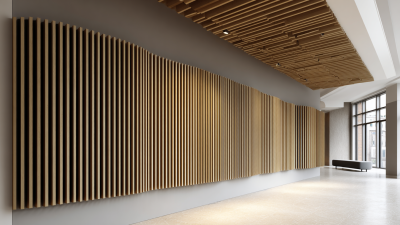
Choosing the Top 5 Manufacturers for Best Slat Wall Acoustic Panels Worldwide
-

How to Enhance Your Space with Interior Acoustic Panels for Better Sound Quality
-

How to Enhance Your Space with Black Acoustic Wall Panels for Optimal Sound Quality
-

Explore Innovations in Interior Acoustic Panels at China Import and Export Fair 2025
-
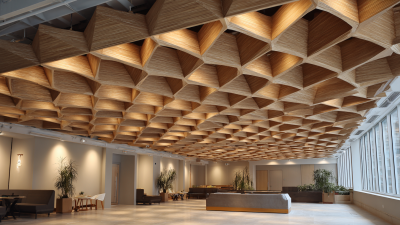
What is the Science Behind Acoustic Ceiling Wood
-

Phone
-

E-mail
-

wechat
wechat

-

whatsapp
whatsapp


